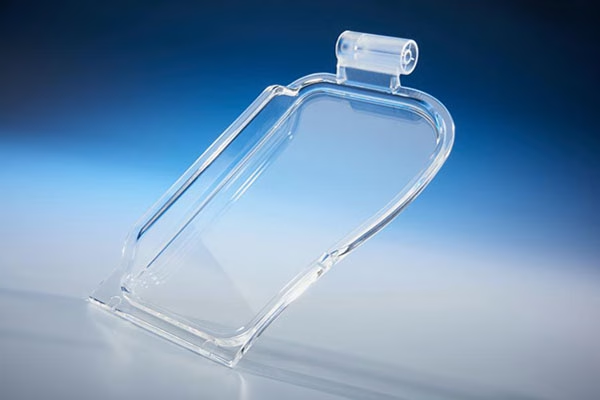Compression molding is a type of molding process with the distinction of using a heated mold exposed to pressure. Like other molding processes, the highlight of the process is the placement of the material, usually of plastic or polymer into the mold cavity. When the material inside the cavity has been set, it is removed from the cavity and we have the final product.
What makes compression molding unique is its use of heat and pressure. When these two elements are added to the process, it changes the overall properties of the molded part.

Compression molding products
In-Depth Look at the Compression Molding Process
The compression molding process begins with heating the material and the mold cavity. Once both elements have reached the desired temperature, the material will be poured into the heated mold cavity.
Heat can cause the material and the mold to expand but the application of pressure makes a difference in the molding process. After pouring the material into the heated mold cavity, the mold is sealed to prepare for the application of high pressure.
The pressure helps the material to fill even the smallest open space in the mold cavity. In some compression molding processes, the pressure can range between 1,000 to 2,000 pounds per square inch. This intense pressure, when combined with the heat, will push the material all over the cavity.
When the material has cooled down, the part is removed from the mold cavity. There are different techniques applied in compression molding, but the process remains the same. The heated material and mold are exposed to pressure.
Advantages of Using Compression Molding
Here are the advantages offered by compression molding:
- Lower Cost Tooling. The process does not use injection or transfer, and therefore, there is less tooling required compared with other molding processes. On top of that, there is not much needed other than the mold. This mold is made from aluminum or low-grade steel. Thus, there is a lower tooling cost.
- Great for Small Production Runs. The lower capital needed for tooling makes compression molding the most cost-effective method in producing a smaller quantity of parts.
- No Gates, Sprues, or Runners. The compression molding process does not use any gates, sprues, or runners. These are tooling features that the material passes through before entering the mold cavity, as in other molding methods.
- Good for Large Parts. Compression Molding is suitable for the production of large parts that other manufacturing processes cannot do. Since the material is directly loaded into the mold cavity, there is no limitation on the weight of the part.
Disadvantages of Compression Molding
Like any other manufacturing process, compression molding has its disadvantages too. Here they are/
- Greater Waste. The compression molding process is not as precise as injection molding. There is a tendency to overfill the cavity to achieve the correct pressure in curing the part. This is necessary to push the air out to free the space.
- Higher Labor Cost. Another disadvantage of compression molding is the labor cost requirement. The process may be simple, but it requires manpower to run the semi-automatic injection run.
- Slower Turnaround Time. The thermal conductivity of rubber and resin used in compression molding is poor. This requires longer to reach the curing temperature. As a result, it limits the speed at which the part is completed.
- Cannot Accommodate Complex Molds. While the process can accommodate complex designs, it is still better suited for larger and simpler objects.
- Contamination. The uncured block of material used in compression molding can pick up specks of dirt that can get pressed and curled on the part, resulting in poor appearance. This could lead to an increase in waste and reject rates.
Conclusion
The compression molding process is ideal when used appropriately. It can help keep the overall cost of the project at a minimum. Before deciding on using this manufacturing technique, ensure that you have considered all the required aspects of the product, its performance, and its life cycle.
